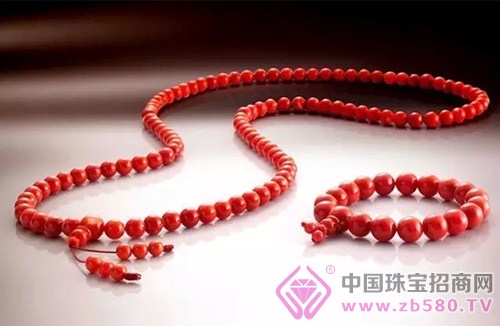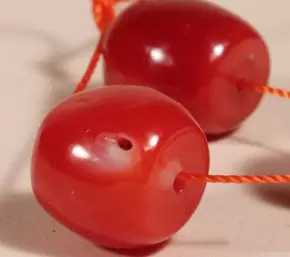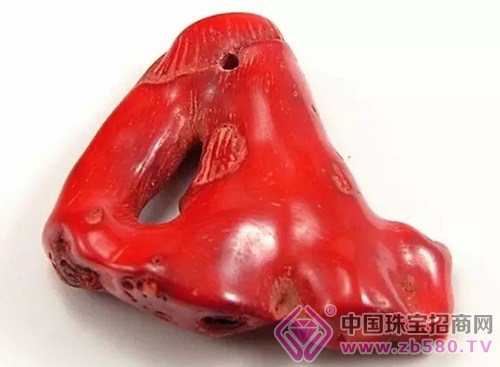In just a few years, the red coral in the collection market has always played a supporting role, but its value has soared, and it has once become a collector's favorite collection. The market is like this, what is red, the tree is big, and the ensuing is that all kinds of "Li Gui" are beginning to flood the market, so we have to guard against it.

First, the level distinction
Red coral is a kind of gem-quality coral. Red coral, white coral and blue coral are calcareous corals. Black coral, gold coral is a horny coral.
1, the top red: AKA red, that is, the Chinese translation of "Aka", with Taiwan's Crimson Aka or Dahong Aka grade standards as typical. Commonly known as "bovine blood red" coral.
2, secondary red: Shading red, named after the typical production of the island of Sardinia, Italy. For the big red steps. Commonly known as "Chilli Red" coral.
3, third-class red: MOMO red, the color is second to Aka red, is a meat peach red or orange red color.
4, four red: ANGELSKIN red, usually called baby face or angel face, also known as "deep water" red.
5, five grades: for powder white, also for deep water.
6, six grades: pure white, that is, ordinary coral fossils.

Second, comprehensive evaluation
1. Color: Red is the best in inland and Taiwan. The red quality is in the order of bright red, red, dark red, rose red, light rose red, and orange red. The European region is the most popular in pink.
2, texture: texture is dense and tough, no flaws are good, there are white spots, white hearts for the second. There are insects or insect eyes, porous, and many cracks again.
3, block degree: Of course, the bigger the more complete the better.
4, construction method: remember one sentence: "Good horse with a good saddle, good work with good materials."
Third, know the truth
1. Look at the growth texture: In the cross section of the red coral, the growth pattern will be like the annual ring, from small to large, relatively regular. Moreover, the growth pattern of each coral is unique, in order to identify the authenticity of the red coral.
2, look at the color transition: the color of the red coral is from the inside out, the color transitions from the center of the column, the closer to the surface layer, the darker the color, the lighter the inner layer.
3, see if there is any flaw: red coral is a natural organic gemstone, more or less there will be some defects, such as small white spots, coral eye, etc., is a normal phenomenon.

Fourth, discriminate
1, sea bamboo: the use of dyed sea bamboo posing as red coral is very common in the market, sea bamboo will have a very obvious vertical texture, and the texture is rough, uneven dyeing, cracks have stain residue, the crack color is deep.
2, filled with dyed coral: is made of loose coral reef coral, filled with glue and dyed. Although this fake coral has a smooth surface, it is fragile and easy to fade.
3. Synthetic dyed coral: It is a kind of shellfish that is ground into powder, plasticized and dyed into red coral. It has no natural texture of coral.
4, jade imitation coral: is to dye the dolomite and other stones, this fake coral has no growth lines, and easy to fade.
5, plastic products: fake red coral with plastic products, no natural texture and luster.
Finally, I hope everyone can buy their favorite collection.
More jewellery knowledge, pay attention to China Jewelry Merchants Network Jewelry Culture>>>
China Prism Glasses,Prism Optical manufacturer, choose the high quality Rectangular Prisms,Optical Roof Prism Binoculars, etc.Founded in 2014, Bena was co-founded by several experienced engineers who have more than 10 years of optical design, process, production and test. We provide customization service for high precision (rms = 1/100λ, λ=632.8nm), large diameter plane mirror (>500mm) and aspherical lens, as well as professional spherical lens (such as Optical Domes with diameter 280mm), involving different materials including K9, Silicon, Sapphire, SiC, glass ceramics, fused silica, and other various optical glasses, and we can also deal with the nickel-phosphorus alloy surface on different substrates.
Prism Glasses,Prism Optical,Rectangular Prisms,Optical Roof Prism Binoculars
Changchun Bena Optical Products Co., Ltd , https://www.benaoptic.com
![<?echo $_SERVER['SERVER_NAME'];?>](/template/twentyseventeen/skin/images/header.jpg)